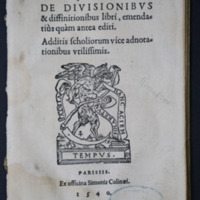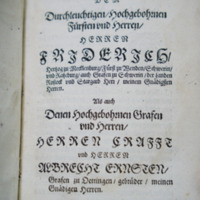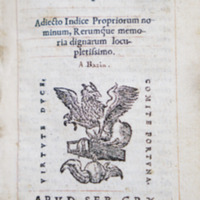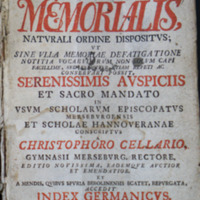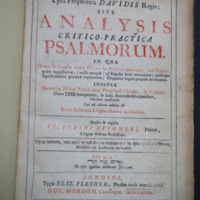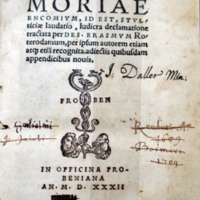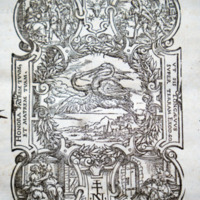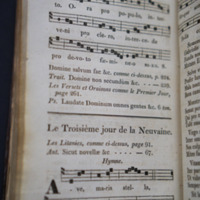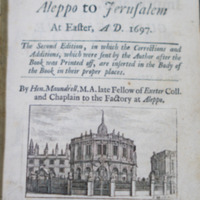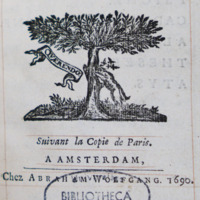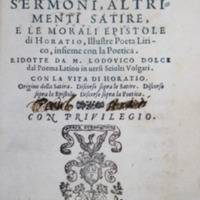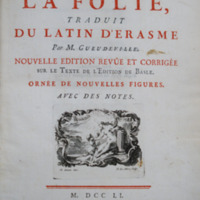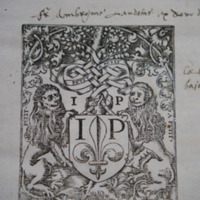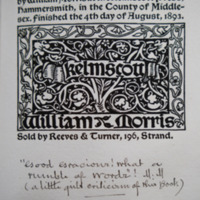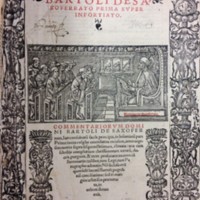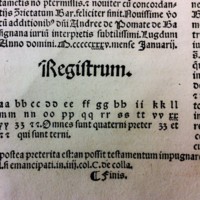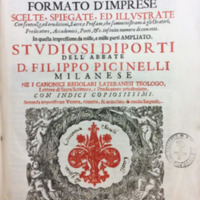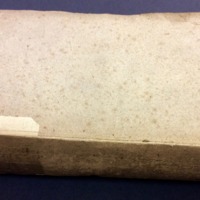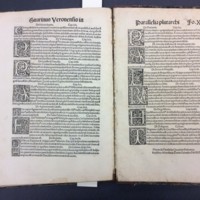Printers
Moveable type has been in existence since the 11th century, an invention of the Chinese, who had already been printing via woodblocks and ink for almost a thousand years. It was not until the mid-1400s that moveable type was introduced to Europe through Johannes Gutenberg’s invention of the printing press (ca. 1400-1468). Before the printing press, books were copied out by hand, hence the word “manuscript”. Given the significant amount of time and effort needed to generate a manuscript, it is no surprise that these were not produced in great numbers, making the written word accessible only to a select few. The mechanization of printing with the press would facilitate an ever more rapid and wide-sweeping dissemination of knowledge, and perhaps, more importantly, the spread of new ideas, throughout Europe and beyond in the form via the printed book.
A simplified description of the process is that in the hand press era, that is, before printing process was mechanized in the 1800s, pieces of type were set to form the words of a page and these pages then placed within a frame. Ink was applied to the type, and with a piece of paper placed over the frame, run through a press, the pressure causing the ink to transfer the words to paper. Typesetting was no mean feat, given that type was not only set into the frame backwards (i.e. to form a mirror image) but upside down. Multiple pages were printed on one sheet, the plates imposed in certain established patterns so that they could be folded up to form a “gathering”. At the end of the process, the gatherings would be sewn together to form the text block.
Document creation, word-processing, desktop publishing, text editing, data entry, etc. Today: effortlessly performed via keyboard, screen and a number of dropdown menus, the finished product put to paper via the click of the “Print” icon. The quote from Balzac, who had himself tried his hand at printing only to abandon it due to lack of success, dates to 1837; it reminds us that even less than two hundred years ago, committing words to paper was a labour intensive, time-consuming, multi-stepped and messy process, one highly dependent on man-power and equipment alike. The very permission to print did not come easily and involved not only the expenditure of time but effort on part of the printer. Counterfeit printing was rife; not only would a printer lose monies to which he was solely entitled if his text was counterfeited, but his reputation as a printer could be put in jeopardy via the innumerable errors and other bibliographic abominations that more often than not appeared in a forged text.
Printers’ devices (also known as printers’ marks) were pictorial symbols and images specifically designed and crafted by a particular printer, used to establish and safeguard his trademark over a text printed on his press. These images would be printed onto to the title page (or its equivalent) or within the colophon of a text. It would not be too farfetched to describe printers’ devices as the “avatars” of their day.
Printer’s devices have been used since the mid-15th century, with the first attributed to Johann Fust (ca. 1400-1466) and Peter Schöffer (ca. 1425-1503) in their Psalter of Mainz, in 1457. The use of devices by printers had their heyday in the 15th and 16th centuries, with their use waning by the 18th century. However, printer’s marks would see a revival in the 19th and 20th centuries within the realm of the private and smaller presses of the era. It is unclear how many printer’s marks were designed by their own respective printers; the literature points to printers seeking out famed artists of the time to execute their devices. Hans Holbein the Younger (1497-1543) is purported to have designed the devices of Johann Froben (1460-1527) and Andreas Cratander (14..-1540), amongst others.
Devices could range from being stylizations of the printer’s initials, such as the devices of William Caxton (1415-1492) or Jean du Pré (14..-1504). They could also be reproductions of the printers’ shop signs, such as rose-rich device of Robert Copland (1508- 1547), whose shop was at the “sign of the Rose Garland in Fleet Street”, or the Christogram HIS utilized by the De La Noue family of printers, who were located on “rue S. Iacques, au nom de Iesus”. Printer’s marks could also be elaborate puns, jeu de mots or double-entendres. While Pierre Le Chandelier’s mark (15..-159.) is, not surprisingly, that of a candelabra, Sebastian Gryphius (1492-1556) is a griffin; Matthias Biener (1495 -1554) (also known as Apiarius)’s depicts a bear raiding a beehive for honey (Biene be- ing the German for “bee”); Christopherus Froschover’s device ( 1496-1564) has a small boy riding a gigantic frog (“Frosch” being the German for frog), and Thomas Woodcock’s depicts a rooster balancing itself in mid-crow on a pile of firewood. Many devices seem to have no particular rhyme or reason for their particular design and so must have a particular meaning familiar solely to the printer himself. The Sessa family of printers adopted the image of a cat with a mouse in its mouth for their device, while that of N. Brylinger depicts two lions, one with an hourglass upraised in its paw. Martin Schott’s mark resembles a cross between a human brain and a cabbage, although the entity’s tentacle-like roots may indicate this is a tree. Was the image poorly executed or is its stylistic aesthetic intentionally mysterious at the request of the printer? The device of Aldus Manutius (1449-1515), perhaps printing’s most famous representative, was that the dolphin wrapped around an anchor. His device does not have an obvious meaning to a contemporary audience. However, it was adopted from Roman coins minted just before the end of the first century, A.D. The anchor and dolphin are associated with the motto “Festina lente” (hurry slowly), which was a motto that Manutius had adopted personally.
Trademark, inside joke or beautiful design, printers literally left their mark within the texts that left their printing presses. An eye-catching device, as well as a literal (good) first impression, ensured a printer could be sought out by authors wishing to disseminate their ideas via the newfangled invention of printing and potential clients who wanted to enrich their collection with high-quality books.


